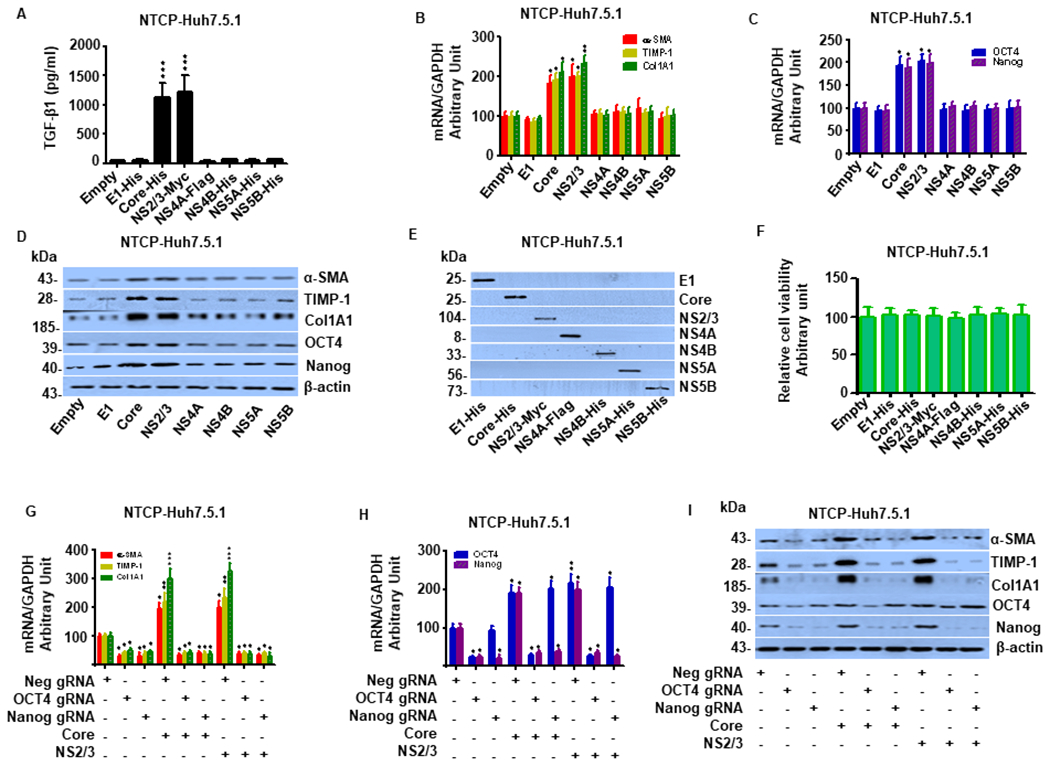Figure 6. OCT4 and Nanog gRNAs reduce HCV-induced liver fibrogenesis in NTCP-Huh7.5.1 cells.

(A). Overexpression of HCV Core or NS2/3 significantly increased TGF-β1 levels in supernatant compared to the Empty vector in NTCP-Huh7.5.1 cells. In contrast, Overexpression HCV E1, NS4A, NS4B, NS5A, NS5B or Empty vector did not significantly affect TGF-β1 levels in supernatant.
(B). Overexpression of HCV Core or NS2/3 significantly increased mRNA expression of liver fibrosis-related genes (α-SMA, TIMP-1 and Col1A1). NTCP-Huh7.5.1 cells (30,000 cell /well in 1 mL) were seeded into a 24-well plate and incubated overnight. The cells were transfected with HCV sub-genomic constructs including HCV E1, core, NS2-3, NS4A, NS4B, NS5A, NS5B or the pcDNA3.1(+) empty vector for 72 hours. Cell lysates were harvested for mRNA quantification by qRT-PCR. We found that overexpression of HCV Core or NS2/3 significantly increased mRNA expression of liver fibrosis-related genes α-SMA, TIMP-1 and Col1A1. In contrast, HCV E1, NS4A, NS4B, NS5A, NS5B and empty vector did not have significant effects on profibrotic gene expression.
(C). Overexpression of HCV Core or NS2/3 significantly increased OCT4/Nanog mRNA levels. NTCP-Huh7.5.1 cells treatments were described in (B). We found that overexpression of HCV Core or NS2/3 significantly increased OCT4/Nanog mRNA expression. In contrast, HCV E1, NS4A, NS4B, NS5A, NS5B and empty vector did not have significant effects on OCT4/Nanog mRNA levels.
(D). Overexpression of HCV Core or NS2/3 significantly increased α-SMA, TIMP-1, Col1A1 and OCT4/Nanog protein levels. NTCP-Huh7.5.1 cells treatments were described in (B). Cell lysates were harvested for protein analysis by western blot. We found that overexpression of HCV Core or NS2/3 significantly increased α-SMA, TIMP-1, Col1A1 and OCT4/Nanog protein levels. In contrast, HCV E1, NS4A, NS4B, NS5A, NS5B and empty vector did not have significant effects on these gene protein levels.
(E). Confirmation of HCV sub-genomic construct overexpression, including HCV E1, Core, NS2-3, NS4A, NS4B, NS5A, NS5B or pcDNA3.1(+) Empty vector in NTCP-Huh7.5.1 cells. The antibodies used included anti-His (Biovision, 3646-100), anti-Myc (Abcam, ab32072), or anti-Flag (Abcam, ab205606). (HRP)-conjugated ECL donkey anti-rabbit IgG (GE Healthcare Biosciences, Pittsburgh, PA, USA) was used as a secondary antibody.
(F). Overexpression HCV sub-genomic constructs including HCV E1, Core, NS2-3, NS4A, NS4B, NS5A, NS5B or Empty vector in NTCP-Huh7.5.1 cells did not significantly affect cell viability.
(G) OCT4 and Nanog gRNAs blocked HCV-stimulated liver fibrosis related gene mRNA in NTCP-Huh7.5.1 cells. NTCP-Huh7.5.1 cells (30,000 cell /well in 1 mL) were seeded into a 24-well plate and incubated overnight. The cells were transfected with HCV Core, NS2/3 and/or OCT4 gRNA, Nanog gRNA, or Neg gRNA for 72 hours. Cell lysates were harvested for mRNA quantification by qRT-PCR. Both OCT4 gRNA and Nanog gRNA suppressed HCV Core- or NS2/3-induced mRNA expression of α-SMA, TIMP-1, and Col1A1.
(H) OCT4 and Nanog gRNAs reduced HCV-stimulated OCT4/Nanog mRNA in NTCP-Huh7.5.1 cells. NTCP-Huh7.5.1 cells treatments were described in (G). Both OCT4 gRNA and Nanog gRNA suppressed HCV Core- or NS2/3-induced OCT4/Nanog mRNA enhancements.
(I) OCT4 and Nanog gRNAs attenuated HCV-stimulated liver fibrosis related gene and OCT4/Nanog protein expression in NTCP-Huh7.5.1 cells. NTCP-Huh7.5.1 cells treatments were described in (G). Cell lysates were harvested for protein analysis by western blot. Both OCT4 gRNA and Nanog gRNA suppressed overexpression of HCV Core- or NS2/3-induced of α-SMA, TIMP-1, Col1A1 and OCT4/Nanog mRNA expressions.
Data are representative of 3 independent experiments with similar results. Bars represent means ± SD of 3 biological repeats. *, p < 0.05. **, p < 0.01. ***, p < 0.001.
